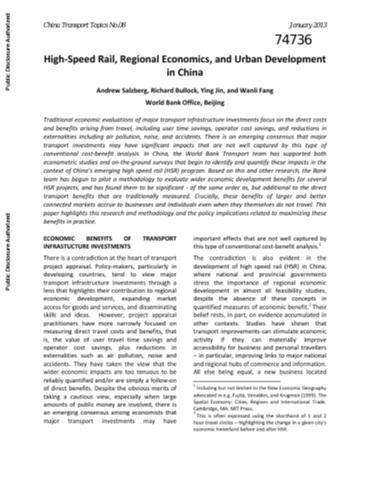Resource information
Traditional economic evaluations of major transport infrastructure investments focus on the direct costs and benefits arising from travel, including user time savings, operator cost savings, and reductions in externalities including air pollution, noise, and accidents. There is an emerging consensus that major transport investments may have significant impacts that are not well captured by this type of conventional cost-benefit analysis. In China, the World Bank transport team has supported both econometric studies and on-the-ground surveys that begin to identify and quantify these impacts in the context of China's emerging High Speed Rail (HSR) program. Based on this and other research, the Bank team has begun to pilot a methodology to evaluate wider economic development benefits for several HSR projects, and has found them to be significant - of the same order as, but additional to the direct transport benefits that are traditionally measured. Crucially, these benefits of larger and better connected markets accrue to businesses and individuals even when they themselves do not travel. This paper highlights this research and methodology and the policy implications related to maximizing these benefits in practice.


